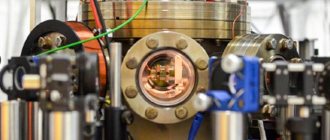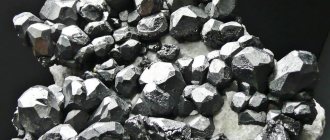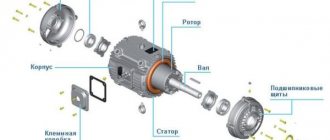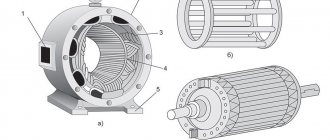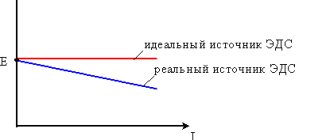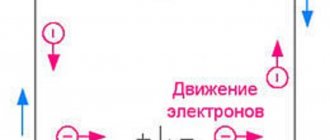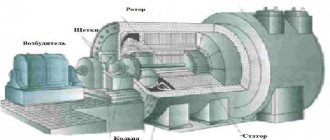Providing the needs of humanity with sufficient energy is one of the key tasks facing modern science. In connection with the increase in energy consumption of processes aimed at maintaining the basic conditions of society, acute problems arise not only in the generation of large volumes of energy, but also in the balanced organization of its distribution systems. And the topic of energy transformation is of key importance in this context. The coefficient of production of useful energy potential, as well as the level of costs for servicing technological operations within the framework of the infrastructure used, depend on this process.
General information about conversion technology
The need to use different types of energy is associated with differences in the processes that require a power resource. Heat is required for heating, mechanical energy is required to power the movement of mechanisms, and light is required for lighting. Electricity can be called a universal source of energy both in terms of its transformation and in terms of its application in various fields. Natural phenomena are usually used as initial energy, as well as artificially organized processes that contribute to the generation of the same heat or mechanical force. In each case, a certain type of equipment or complex technological structure is required, which, in principle, allows for the conversion of energy into the form required for final or intermediate consumption. Moreover, among the tasks of the converter, not only transformation stands out as the transfer of energy from one type to another. Often this process also serves to change some energy parameters without transforming it.
The transformation itself can be single-stage or multi-stage. In addition, for example, the operation of photocrystalline solar generators is usually considered as the transformation of light energy into electricity. But at the same time, it is also possible to transform the thermal energy that the Sun gives to the soil as a result of heating. Geothermal modules are placed at a certain depth in the ground and, through special conductors, fill batteries with energy reserves. In a simple conversion scheme, the geothermal system provides the accumulation of heat energy, which is given to the heating equipment in its pure form with basic preparation. The complex structure uses a heat pump in a single group with heat condensers and compressors that provide heat conversion and electricity.
Links[edit]
- Petrocelli, R. (2015). "Single-Quadrant Switched Mode Power Converters." In Bailey, R. (ed.). Proceedings of the CAS–CERN Accelerator School: Power Converters
. Geneva: CERN. paragraph 15. arXiv: 1607.02868. DOI: 10.5170/CERN-2015-003. ISBN 9789290834151. - Electric Power Around the World. Archived September 6, 2009, at the Wayback Machine, Kropla.com.
- Abraham I. Pressman (1997). Switching power supply
. McGraw-Hill. ISBN 0-07-052236-7. - Ned Mohan, Tore M. Undeland, William P. Robbins (2002). Power Electronics: Converters, Applications and Design
. Wiley. ISBN 0-471-22693-9. - Fang Lin Luo, Hong Ye, Muhammad H. Rashid (2005). Digital Power Electronics and Applications
. Elsevier. ISBN 0-12-088757-6. - Fang Lin Luo, Hong Ye (2004). Advanced DC/DC Converters
. CRC Press. ISBN 0-8493-1956-0. - Minggliang Liu (2006). Demystifying Switched Capacitor Circuits
. Elsevier. ISBN 0-7506-7907-7.
Types of electrical energy conversion
There are different technological methods for extracting primary energy from natural phenomena. But even more opportunities for changing the properties and forms of energy are provided by accumulated energy resources, since they are stored in a form convenient for transformation. The most common forms of energy conversion include radiation, heating, mechanical and chemical operations. The most complex systems involve molecular degradation processes and multilevel chemical reactions that combine multiple transformation steps.
The choice of a specific transformation method will depend on the conditions of the process organization, the type of initial and final energy. Among the most common types of energy that, in principle, participate in transformation processes are radiant, mechanical, thermal, electrical and chemical energy. At a minimum, these resources are successfully exploited in industry and households. Indirect energy conversion processes, which are derivatives of one or another technological operation, deserve special attention. For example, metallurgical production requires heating and cooling operations, which produce steam and heat as derived, but not target, resources. In essence, these are waste products that are also used, transformed or used within the same enterprise.
Heat energy conversion
One of the oldest energy sources in terms of development and the most important for maintaining human life, without which it is impossible to imagine the life of modern society. In most cases, heat is converted into electricity, and a simple scheme for such transformation does not require connecting intermediate stages. However, in thermal and nuclear power plants, depending on their operating conditions, a preparation stage with the conversion of thermal into mechanical energy can be used, which requires additional costs. Today, direct thermoelectric generators are increasingly used to convert thermal energy into electricity.
The transformation process itself occurs in a special substance, which is burned, releases heat and subsequently acts as a source of current generation. That is, thermoelectric installations can be considered as zero-cycle sources of electricity, since their operation starts even before the appearance of base thermal energy. The main resource is fuel elements – usually gas mixtures. They are burned, resulting in heating of the heat-distributing metal plate. In the process of heat removal through a special generator module with semiconductor materials, energy conversion occurs. Electric current is generated by a radiator unit connected to a transformer or battery. In the first option, energy is immediately supplied to the consumer in finished form, and in the second, it is accumulated and released as needed.
DC power conversion[edit]
DC to DC [edit]
Main article: DC-DC converter
The following devices can convert DC to DC current: [ more explanation required
]
- Linear regulator
- Voltage regulator
- Motor generator
- Rotary transducer
- Switching power supply
| This section needs expansion . |
DC to AC [edit]
The following devices can convert DC to AC: [ more explanation required
]
- Power inverter
- Motor generator
- Rotary transducer
- Switching power supply
| This section needs expansion . |
Generation of thermal energy from mechanical
Also one of the most common ways to obtain energy as a result of transformation. Its essence lies in the ability of bodies to give off thermal energy in the process of doing work. In its simplest form, this energy transformation scheme is demonstrated by the example of the friction of two wooden objects, which results in fire. However, to use this principle with tangible practical benefit, special devices are required.
In households, the transformation of mechanical energy takes place in heating and water supply systems. These are complex technical structures with a magnetic core and a laminated core connected to closed electrically conductive circuits. Also inside the working chamber of this design there are heating pipes, which are heated under the action of the work done from the drive. The disadvantage of this solution is the need to connect the system to the electrical network.
In industry, more powerful liquid-cooled converters are used. The source of mechanical work is connected to closed water tanks. During the movement of the executive bodies (turbines, blades or other structural elements) conditions for vortex formation are created inside the circuit. This happens during moments of sudden braking of the blades. In addition to heating, in this case the pressure also increases, which facilitates the processes of water circulation.
Nuclear power plants
The development of nuclear energy is due to the following reasons:
- exhaustibility of hydrocarbon sources (proven world reserves of oil - for 46 years, gas - for 60 years, see paragraph 1). At the same time, global energy consumption is expected to increase by 60% by 2030).
- the problem of global climate change associated with the emission of greenhouse gases from hydrocarbon energy sources.
Thermal circuits of nuclear power plants depend on the type of reactor, type of coolant, composition of equipment, and can be single-, double-, or triple-circuit. With a single-circuit circuit, as can be seen from Fig. 9, steam is generated directly in the reactor and enters the steam turbine. The exhaust steam is condensed in a condenser, and the condensate is pumped into the reactor.
Rice. 9. Diagram of a single-circuit nuclear power plant: 1 – nuclear reactor; 2 – turbine; 3 – electric generator; 4 – water vapor condenser; 5 – feed pump
Disadvantages: the steam (working fluid) at the outlet of the reactor becomes radioactive, which places increased demands on biological protection and makes it difficult to monitor and repair equipment.
In a dual-circuit circuit (Fig. 10), the pressure in the first circuit (coolant circuit) is significantly higher than in the second. The steam produced in the heat generator is supplied to the turbine, does work, then condenses, and the condensate is supplied to the steam generator by the feed pump. This complicates the installation and reduces its efficiency, but prevents the appearance of radioactivity in the secondary circuit.
Rice. 10. Diagram of a single-circuit nuclear power plant: 1 – nuclear reactor; 2 – heat exchanger-steam generator; 3 – main circulation pump; 4 – turbine; 5 – electric generator; 6 – water vapor condenser; 7 – feed pump
In a three-circuit scheme (Fig. 11), liquid metals (for example, sodium) serve as coolants in the primary circuit. Radioactive sodium from the reactor enters the intermediate circuit heat exchanger with sodium, which gives off heat and is returned to the reactor. The sodium pressure in the second circuit is higher than in the first, which eliminates the leakage of radioactive sodium.
In the intermediate second circuit, sodium transfers heat to the working fluid (water) of the third circuit. The resulting steam enters the turbine, does work, condenses and enters the steam generator.
Around the world, the cheapest energy is generated from nuclear power plants. According to preliminary estimates, the Belarusian nuclear power plant will produce about 27–30% of all energy consumed in the republic (France - 78%).
Rice. 11. Scheme of a three-circuit nuclear power plant: 1 – nuclear reactor with primary biological protection; 2 – secondary biological protection; 3 – turbine; 4 – generator; 5 – capacitor; 6 – circulation pumps; 7 – regenerative heat exchanger; 8 – water tank; 9 – steam generator; 10 – intermediate heat exchanger; T – step-up transformer; TSN – auxiliary transformer; RU HV – high voltage switchgear (110 kV and above); RU SN – auxiliary switchgear
The commissioning of the Belarusian NPP against the backdrop of the existing dynamics of prices for external energy resources will help curb the growth of electricity tariffs. The Belarusian nuclear power plant will have two power units with VVER-1200 (water-water) reactors each with a capacity of up to 1200 MW (Fig. 12, 28). The designed capacity of the nuclear power plant is 2.4 thousand MW (efficiency is about 30%). The commissioning date for the first power unit is 2022.
Rice. 12. Scheme of the VVER reactor of the Belarusian NPP
Rice. 13. General view of the construction site of the Belarusian NPP
Disadvantages of nuclear power plants:
- During the operation of nuclear power plants, a large amount of radioactive substances is formed in the fuel, coolant, and structural materials, which requires special methods for their disposal and compliance with safety requirements for operating personnel.
- Requirements for special methods of disposal or reprocessing of spent fuel.
- Danger of accidents. To solve this problem, the requirements for the reliability and safety of nuclear power plants are being increased.
Conversion of electromechanical energy
Most modern technical units operate on the principles of electromechanics. Synchronous and asynchronous electrical machines and generators are used in transport, machine tools, industrial engineering units and other power plants for various purposes. That is, electromechanical types of energy conversion are applicable to both generator and motor operating modes, depending on the current requirements of the drive system.
In a generalized form, any electrical machine can be considered as a system of mutually moving magnetically coupled electrical circuits. Similar phenomena also include hysteresis, saturation, higher harmonics and magnetic losses. But in the classical view, they can be classified as analogues of electric machines only if we are talking about dynamic modes when the system operates within the energy infrastructure.
The electromechanical energy conversion system is based on the principle of two reactions with two-phase and three-phase components, as well as the method of rotating magnetic fields. The rotor and stator of motors perform mechanical work under the influence of a magnetic field. Depending on the direction of movement of charged particles, the operating mode is set - as a motor or generator.
Generating electricity from chemical energy
The total chemical source of energy is traditional, but methods of its transformation are not so common due to environmental restrictions. Chemical energy itself is practically never used in its pure form, at least not in the form of concentrated reactions. At the same time, natural chemical processes surround a person everywhere in the form of high- or low-energy combinations, which manifest themselves, for example, during combustion with the release of heat. However, the conversion of chemical energy is purposefully organized in some industries. Typically, conditions are created for high-tech combustion in plasma generators or gas turbines. A typical reagent for these processes is a fuel cell, which contributes to the production of electrical energy. From an efficiency point of view, such transformations are not as beneficial as compared to alternative methods of generating electricity, since some of the useful heat is dissipated even in modern plasma installations.
Conversion of solar radiation energy
As a method of energy conversion, the process of processing sunlight may in the near future become the most popular in the energy sector. This is due to the fact that even today every homeowner can theoretically purchase equipment for converting solar energy into electrical energy. The key feature of this process is that the accumulated sunlight is free. Another thing is that this does not make the process completely cost-free. Firstly, there will be costs associated with the maintenance of solar batteries. Secondly, generators of this type themselves are not cheap, so few people can yet afford the initial investment in organizing their own mini-power station.
What is a solar energy generator? This is a set of photovoltaic panels that convert the energy of the sun's rays into electricity. The very principle of this process is in many ways similar to the operation of a transistor. Silicon is used as the main material for the manufacture of solar cells in different versions. For example, a device for converting solar energy can be poly- or monocrystalline. The second option is preferable in terms of performance characteristics, but is more expensive. In both cases, the photocell is illuminated, during which the electrodes are activated and, in the process of their movement, an electrodynamic force is generated.
Hydropower
Hydroelectric power is a traditional energy source on the one hand and a renewable energy source on the other. Currently, hydropower accounts for about 4% of total global energy consumption.
A hydroelectric power station is a complex of hydraulic structures and power equipment through which the energy of water flows or reservoirs located at relatively higher levels is converted into electrical energy (Fig. 14).
The technological process of generating electricity at hydroelectric power stations includes:
- creation of different water levels using a dam (exception: flow-type mini hydroelectric power stations);
- converting the energy of water flow into rotational energy of the hydraulic turbine shaft;
- conversion of rotational energy into electric current energy by a hydrogenerator.
Rice. 14. Hydroelectric power station equipment
Indicators of the power of a hydroelectric power station are water flow and hydrostatic pressure, which depends on the difference in height between the initial and final points of water fall. The plant design may be based on one or both of these indicators.
Advantages of hydroelectric power plants:
- the operation of hydroelectric power stations is not accompanied by the release of carbon monoxide and carbon dioxide, nitrogen and sulfur oxides, dust pollutants and other harmful waste, thereby not polluting the soil;
- water is a renewable energy source;
- the performance of hydroelectric power plants can be easily controlled by changing the speed of the water flow (the volume of water supplied to the turbines);
- reservoirs built for hydroelectric power stations can be used as recreation areas, sometimes a truly breathtaking landscape develops around them;
- Water in artificial reservoirs is usually clean, as impurities are deposited at the bottom. This water can be used for drinking, washing, bathing and irrigation.
Disadvantages of hydroelectric power plants:
- large reservoirs flood large areas of land that could be used for other purposes;
- the destruction or failure of a large hydroelectric dam almost inevitably causes a catastrophic flood downstream of the river;
- the construction of hydroelectric power stations is ineffective in lowland areas;
- prolonged drought reduces and may even interrupt hydroelectric power production;
- environmental problems: the dam reduces the level of oxygen dissolved in the water, since the normal flow of the river practically stops, which negatively affects the flora and fauna of the reservoir; the dam can disrupt the spawning cycle of fish.
Steam energy conversion
Steam turbines can be used in industry as a way to transform energy into an acceptable form, and as an independent generator of electricity or heat from specially directed flows of conventional gas. Turbine machines are not the only ones used as devices for converting electrical energy in conjunction with steam generators, but their design is optimally suited for organizing this process with high efficiency. The simplest technical solution is a turbine with blades, to which nozzles with supplied steam are connected. As the blades move, the electromagnetic installation inside the apparatus rotates, mechanical work is performed and current is generated.
Some turbine designs have special extensions in the form of stages, where the mechanical energy of the steam is converted into kinetic energy. This feature of the device is determined not so much by the interests of increasing the energy conversion productivity of the generator or by the need to generate kinetic potential, but by providing the possibility of flexible regulation of the turbine operation. The expansion in the turbine provides a control function, which makes it possible to effectively and safely regulate the amount of energy generated. By the way, the expansion working area, which is included in the conversion process, is called the active pressure stage.
AC power conversion[edit]
AC to DC [edit]
The following devices can convert AC to DC: [ more explanation required
]
- Rectifier
- Mains power supply (PSU)
- Motor generator
- Rotary transducer
- Switching power supply
| This section needs expansion . |
AC to AC [edit]
Main article: AC-AC converter
The following devices can convert AC to AC current: [ more explanation needed
]
- Transformer or autotransformer
- Voltage transformer
- Voltage regulator
- Cycloconverter
- Variable frequency transformer
- Motor generator
- Rotary transducer
- Switching power supply
| This section needs expansion . |
Methods of energy transfer
Methods of energy transformation cannot be considered without the concept of its transmission. Today, there are four ways of interaction of bodies in which energy transfer occurs - electrical, gravitational, nuclear and weak. Transmission in this context can also be considered as a method of exchange, therefore, the performance of work during energy transfer and the heat exchange function are fundamentally separated. What energy transformations involve doing work? A typical example is a mechanical force in which macroscopic bodies or individual particles of bodies move in space. In addition to mechanical force, magnetic and electrical work are also distinguished. The key unifying property for almost all types of work is the ability for complete quantitative transformation between themselves. That is, electricity is transformed into mechanical energy, mechanical work into magnetic potential, etc. Heat exchange is also a common method of energy transfer. It can be undirected or chaotic, but in any case there is movement of microscopic particles. The number of activated particles will determine the amount of heat - useful heat.
Electricity of the net. Electrical insulation. Energy losses during transportation
An electric power (electric) system is a set of electrical parts of stations, networks and electricity consumers, connected by the commonality of the regime and the continuity of the process of production, distribution and consumption of electricity (Fig. 25). An electrical network is a set of electrical installations for the distribution of electrical energy, consisting of substations, switchgears, overhead and cable power lines (Fig. 26).
The choice of the rated voltage of the power line is determined by the transmitted power and distance.
Based on the rated voltage, the networks are divided into:
- on low voltage (LV) networks - up to 1.0 kV (Fig. 27, a);
- medium voltage (MV) – 3–35 kV;
- high voltage (HV) – 110–220 kV (Fig. 27, b);
- ultra-high voltage (UHV) – 330–750 kV;
- ultra-high voltage (UHV) - over 1000 kV (Fig. 27, c).
Rice. 25. Scheme of the main power grids of Belarus
Rice. 26. Typical electrical installations
Rice. 27. General view of electrical networks of various voltages
An important element of electrical networks is power lines. Currently, overhead (see Fig. 27) and cable power lines (Fig. 28) are used. Overhead power lines are a traditional, well-proven technology in the power industry. They are cheaper to install, but are susceptible to external influences (breaks, damage, corrosion, etc.), in addition, they occupy land (especially taking into account the security zone). Cable power lines do not have these disadvantages. However, high-voltage cables are expensive products that require special insulation methods. With the development of technology, the cost of cables is decreasing.
Rice. 28. General view and laying of cable power lines
Electrical substation is an electrical installation designed for receiving, converting and distributing electrical energy, consisting of transformers or other electrical energy converters, control devices, distribution and auxiliary devices (Fig. 29).
Rice. 29. General view of equipment of substations of various capacities
In addition to transformers, substations include a large amount of power switching equipment, bus systems and sections, protection and automation systems, grounding devices, etc.
The following types of insulation are used in electrical networks:
- aerial (ensuring the required distance between the wires (Fig. 30));
- using ceramic insulators (see Fig. 30);
- plastic, paper (cable lines) (Fig. 31).
Rice. 30. Air insulation and insulation with ceramic insulators
Rice. 31. Paper and plastic insulation of electrical cables
- Technical losses. They arise during the transmission of energy through electrical networks and are caused by physical processes that occur in wires and equipment:
- voltage drop due to wire resistance. Ohm's law: U = I · R, P = U · I);
- reactive losses (incomplete absorption of energy, its reflection from the load and circulation of parasitic currents in wires at cos f ≠ 1 (usually 0.3–0.8);
- increase in contact resistance (wear of contacts of switches, starters, etc.;
- leakage currents (reduction of insulation resistance). Electrical structures and units can be free-standing or built into main industrial facilities and provide technological processes, operation of units, control and management of production.
- Electricity that is spent to ensure the operation of substations and personnel activities.
- Losses that are caused by errors in measuring electricity by instruments.
- Commercial losses. These are energy theft, differences in meter readings and payments made by consumers.
International experts have determined that energy losses during transmission through electrical networks are considered to meet the requirements if their figure is not higher than 4–5%. In the case when they reach 10%, they should be considered the maximum permissible (for countries with a large territory). As noted above, currently energy losses in the power grids of the Republic of Belarus do not exceed 9%.
